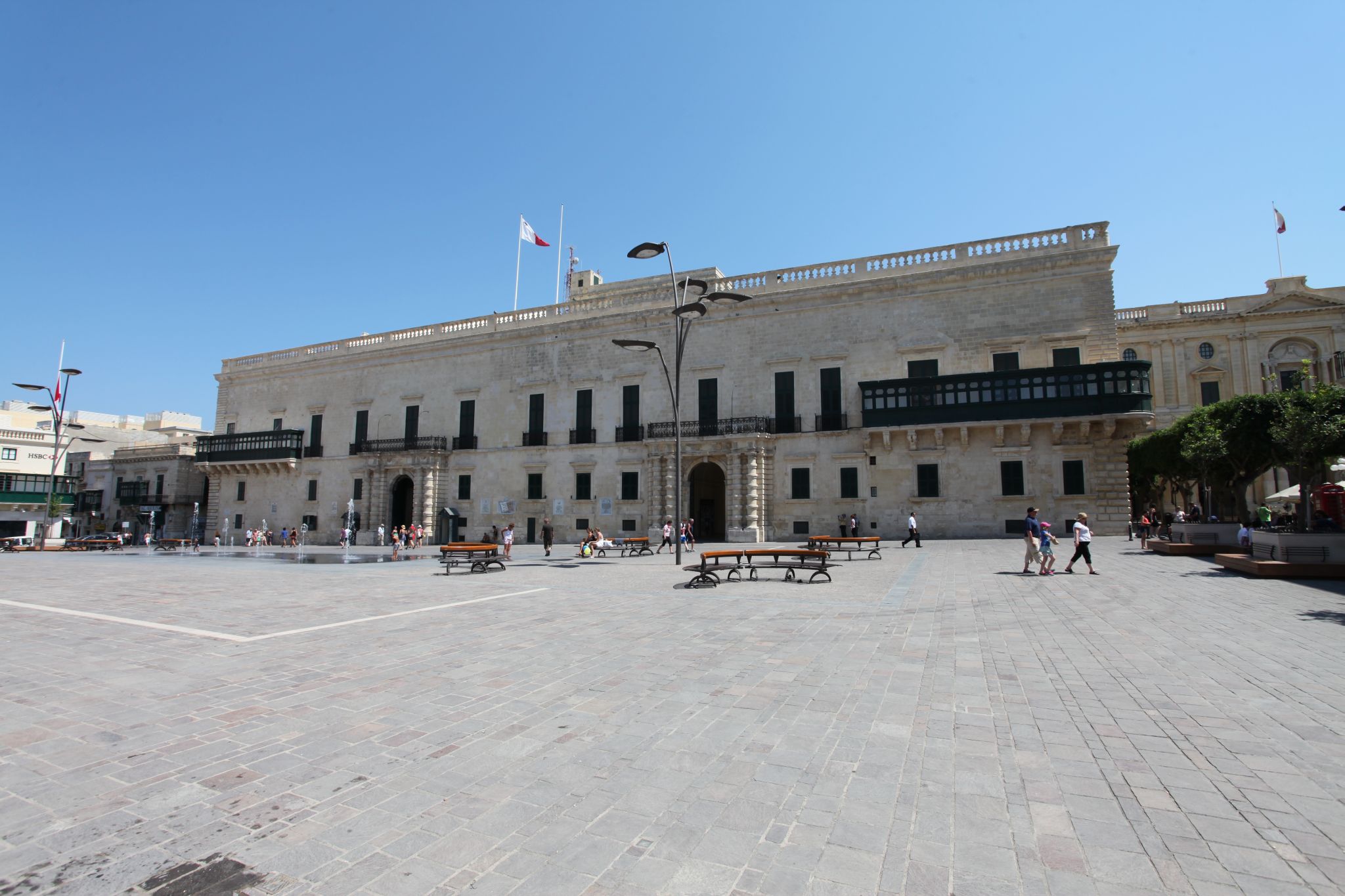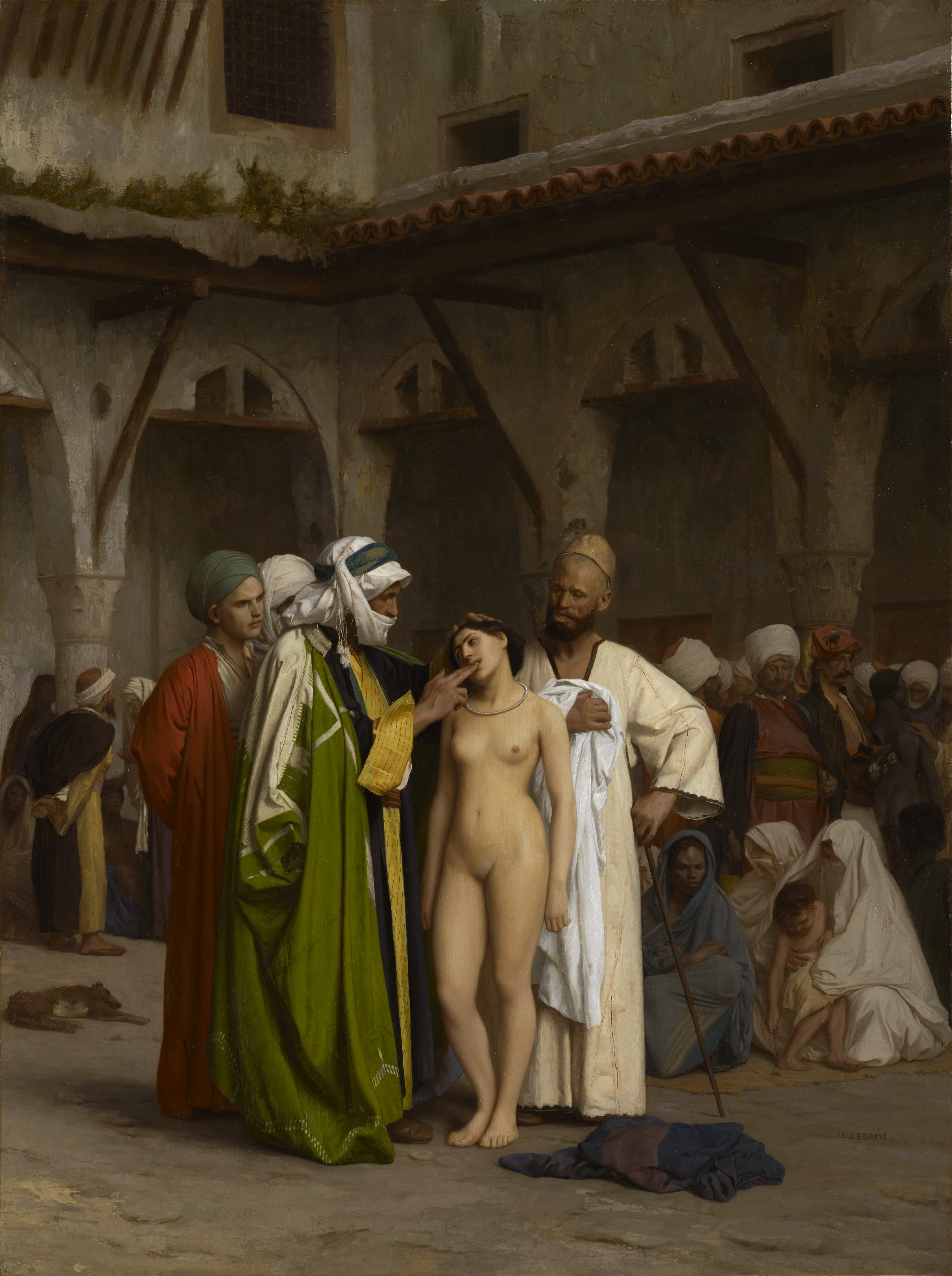|
St George's Square, Valletta
Saint George's Square (, ) is the principal urban square of Valletta, Malta, located in the centre of the city. It is also commonly known as Palace Square () as it faces the Grandmaster's Palace. The square is bounded by Republic Street along the southeast, Old Theatre Street along the southwest, and Archbishop Street along the northeast. It is linked to Republic Square to the south. Buildings and monuments The square is dominated by the main façade of the Grandmaster's Palace at its southeast end. In the late 16th century, four separate buildings were constructed in its place, and these were later amalgamated into a single palace which became the seat of the Hospitaller Grand Masters who at the time ruled the Maltese Islands. The building was gradually altered and embellished by successive Grand Masters, and its present configuration dates back to the mid-18th century. The palace currently houses the Office of the President of Malta and is open to the public as a mus ... [...More Info...] [...Related Items...] OR: [Wikipedia] [Google] [Baidu] |
Main Guard (Valletta)
The Main Guard, originally called the ''Guardia della Piazza'', is a building in Valletta, Malta, located in St George's Square facing the Grandmaster's Palace in the city centre. It was originally built as a guardhouse in 1603 by the Order of St. John, and it remained in use after the British took over Malta in 1800. A Neoclassical portico was added in 1814, and a British coat of arms and a commemorative inscription were installed later on above the portico. These have become one of the main symbols of British rule in Malta. The building used to house the Office of the Attorney General. History The Main Guard building was built in 1603 to house the ''Regimento di Guardia'', the personal guards of the Grand Master of the Order of St. John. It was built in the square facing the Grandmaster's Palace. The building's original form without the portico is visible in a painting dating back to the French occupation of Malta. In 1814, a neoclassical portico was added to the Main ... [...More Info...] [...Related Items...] OR: [Wikipedia] [Google] [Baidu] |
Casa Del Commun Tesoro
The Casa del Commun Tesoro (Italian language, Italian for ''House of the National Treasury''), or ''Casa dei Conti del Tesoro'', is a building in Valletta, Malta, located in Republic Square, Valletta, Republic Square facing the National Library of Malta, Bibliotheca. It was originally built to house the Treasury of the Knights Hospitaller, Order of St. John. Part of the building housed Malta's first post office, and over the years it was also used as government offices, a hotel and a cinema. Since the early 20th century, it has been the premises of a gentlemen's club known as the Casino Maltese. History The original building was most likely designed by Girolamo Cassar. The Casa del Commun Tesoro originally belonged to the Treasury of the Knights Hospitaller, Order of St. John, and it housed the Treasury's accounts, contracts and records. It remained housing the treasury until the 19th century.5 Gold and silver bullion were stored at the ''Conservatoria'', located opposite the Casa ... [...More Info...] [...Related Items...] OR: [Wikipedia] [Google] [Baidu] |
Slave Market
A slave market is a place where slaves are bought and sold. These markets are a key phenomenon in the history of slavery. Asia Central Asia Since antiquity, cities along the Silk road of Central Asia, had been centers of slave trade. In the early middle ages, Central Asia was a transit area for European slaves sold by the Vikings in Russia to slavery in the Abbasid Caliphate via the slave markets of the Central Asia. The slave trade in the Mongol Empire created a network of connected slave markets between Asia and Europe. In the 19th century, the slave markets of Khiva and Bukhara were still among the biggest slave markets in the world. In Bukhara, Samarkand, Karakul, Karshi, and Charju, mainly Persians, Russians, and some Kalmyk slaves, were traded by Turkmens, Kazakhs, and Kyrgyz. From the 17th to 19th centuries, Khiva was a notorious slave market for captured Persian and Russian slaves. The slave markets of central Asia was eradicated with the Russian conquest o ... [...More Info...] [...Related Items...] OR: [Wikipedia] [Google] [Baidu] |
Floriana
Floriana ( or ''Il-Floriana''), also known by its title Borgo Vilhena, is a Floriana Lines, fortified town in the Port Region, Malta, Port Region area of Malta, just outside the capital city Valletta. It has a population of 2,205 as of March 2014. Floriana is the birthplace of many famous Maltese, amongst which the composer of the national anthem, 'L-Innu Malti', Robert Samut; former Bishop of Malta Dun Mauro Caruana, the poets Oliver Friggieri and Maria Grech Ganado, the writer and politician Herbert Ganado and Swedish Idol winner Kevin Borg. Etymology Floriana is named after Pietro Paolo Floriani, an Italian military engineer who designed the Floriana Lines, the line of fortifications surrounding the town. In Maltese language, Maltese, the town is called ''Il-Floriana'' by the local council. However, it is popularly known as ''Il-Furjana'', and the latter is regarded as the official name by the National Council for the Maltese Language. Government sources use both variants. The ... [...More Info...] [...Related Items...] OR: [Wikipedia] [Google] [Baidu] |
The Malta Independent
''The Malta Independent'' is a national newspaper published daily in Malta. It was started in 1992. The paper Paper is a thin sheet material produced by mechanically or chemically processing cellulose fibres derived from wood, Textile, rags, poaceae, grasses, Feces#Other uses, herbivore dung, or other vegetable sources in water. Once the water is dra ... publishes an online version branded as ''Malta Independent Online''. References External links Official Website 1992 establishments in Malta English-language newspapers published in Malta Maltese news websites Newspapers established in 1992 Daily newspapers {{Malta-newspaper-stub ... [...More Info...] [...Related Items...] OR: [Wikipedia] [Google] [Baidu] |
Wignacourt Aqueduct
The Wignacourt Aqueduct () is a 17th-century Aqueduct (water supply), aqueduct in Malta, which was built by the Knights Hospitaller, Order of Saint John to carry water from springs in Dingli and Rabat, Malta, Rabat to the newly built capital city Valletta. The aqueduct carried water through underground pipes and over arched viaducts across depressions in the ground. The first attempts to build the aqueduct were made by Grand Master Martin Garzez in 1596, but construction was suspended before being continued in 1610. The watercourse was inaugurated five years later on 21 April 1615. Several engineers took part in the project, including Bontadino de Bontadini, Giovanni Attard and Natale Masuccio, Natale Tomasucci. The aqueduct was named after Grand Master Alof de Wignacourt, who partially financed its construction. The aqueduct remained in use until the 20th century. Most of its arches still survive today, and can still be seen in the localities of Attard, Balzan, Birkirkara, Fle ... [...More Info...] [...Related Items...] OR: [Wikipedia] [Google] [Baidu] |
Monumental Column
A victory column, or monumental column or triumphal column, is a monument in the form of a column, erected in memory of a heroic commemoration, including victorious battle, war, or revolution. The column typically stands on a base and is crowned with a victory symbol, such as a statue. The statue may represent the goddess Victoria (mythology), Victoria; in Germany, the female embodiment of the nation, Germania (personification), Germania; in the United States either the female embodiment of the nation Liberty (personification), Liberty or Columbia (personification), Columbia; in the United Kingdom, the female embodiment Britannia, an eagle, or a naval war hero depicted as a helmeted woman, wielding a trident, shield and olive branch. Monumental columns List of Roman victory columns Of the columns listed above, the following are the Roman columns. Ancient Rome, Roman triumphal columns were either monolithic Column, pillars or composed of column drums; in the later case, these ... [...More Info...] [...Related Items...] OR: [Wikipedia] [Google] [Baidu] |
Hugues Loubenx De Verdalle
Fra' Hugues Loubenx de Verdalle (13 April 1531 – 4 May 1595) was the 51st Grand Master of the Order of Malta, between 1582 and 1595. History He is mainly remembered for the reconstruction of the hunting lodge at Boschetto which was renamed Verdala Palace in his honour. The palace is located in the Buskett Gardens, within the limits of Siġġiewi. He is buried in a sarcophagus in the Crypt of the Co-Cathedral of St. John in Valletta. He was made Cardinal-Deacon of S. Maria in Portico Octaviae by Pope Sixtus V in the consistory Consistory is the anglicized form of the consistorium, a council of the closest advisors of the Roman emperors. It can also refer to: *A papal consistory, a formal meeting of the Sacred College of Cardinals of the Roman Catholic Church *Consistor ... of December 18, 1587. Verdalle owned 230 slaves at the time of his death, and some of them were bequeathed to his relatives and friends. References External links Coins of Grandmaster Hugues L ... [...More Info...] [...Related Items...] OR: [Wikipedia] [Google] [Baidu] |
Main Guard In Valletta, Malta, By Horatio Agius, Circa 1870s
Main may refer to: Geography *Main River (other), multiple rivers with the same name *Ma'in, an ancient kingdom in modern-day Yemen *Main, Iran, a village in Fars Province *Spanish Main, the Caribbean coasts of mainland Spanish territories in the 16th and 17th centuries *''The Main'', the diverse core running through Montreal, Quebec, Canada, also separating the Two Solitudes *Main (lunar crater), located near the north pole of the Moon *Main (Martian crater) People and organizations *Main (surname), a list of people with this family name *Main, alternate spelling for the Minaeans, an ancient people of modern-day Yemen *Main (band), a British ambient band formed in 1991 *Chas. T. Main, an American engineering and hydroelectric company founded in 1893 *MAIN (Mountain Area Information Network), former operator of WPVM-LP (MAIN-FM) in Asheville, North Carolina, U.S. *Main Deli Steak House ("The Main"), a smoked-meat delicatessen in Montreal, Quebec, Canada Ships * ''Ma ... [...More Info...] [...Related Items...] OR: [Wikipedia] [Google] [Baidu] |
Charles De Brocktorff, The Grandmaster's Palace On Piazza San Giorgio, Valletta
Charles is a masculine given name predominantly found in English and French speaking countries. It is from the French form ''Charles'' of the Proto-Germanic name (in runic alphabet) or ''*karilaz'' (in Latin alphabet), whose meaning was "free man". The Old English descendant of this word was '' Ċearl'' or ''Ċeorl'', as the name of King Cearl of Mercia, that disappeared after the Norman conquest of England. The name was notably borne by Charlemagne (Charles the Great), and was at the time Latinized as ''Karolus'' (as in ''Vita Karoli Magni''), later also as '' Carolus''. Etymology The name's etymology is a Common Germanic noun ''*karilaz'' meaning "free man", which survives in English as churl (James (< Latin ''-us'', see Spanish/ Portuguese ''Carlos''). According to Julius Pokorny, the historical linguist and Indo-European studies, Indo-Europeanist, the root meaning of Charles is "old man", from Proto-Indo-European language, Indo-European *wikt:Appendix:Proto-Indo-Eur ... [...More Info...] [...Related Items...] OR: [Wikipedia] [Google] [Baidu] |





